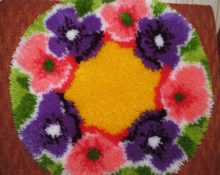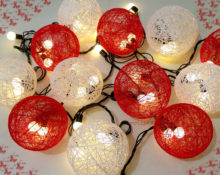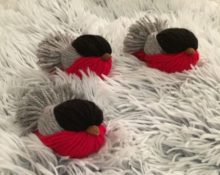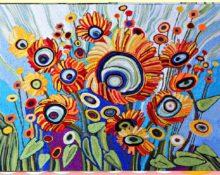Each culture has certain attributes and sacred symbols that are an integral part of people’s lives. To the uninitiated, they may seem like ordinary objects whose purpose is either completely unclear or misinterpreted.
Thus, a geometric pattern (mandala) drawn or woven from threads may seem like an ordinary item for interior decoration to people who are poorly versed in Eastern practices. In fact, a mandala is a magical sign, endowed with special power to help in the fulfillment of cherished desires, which a person creates with his own hands.
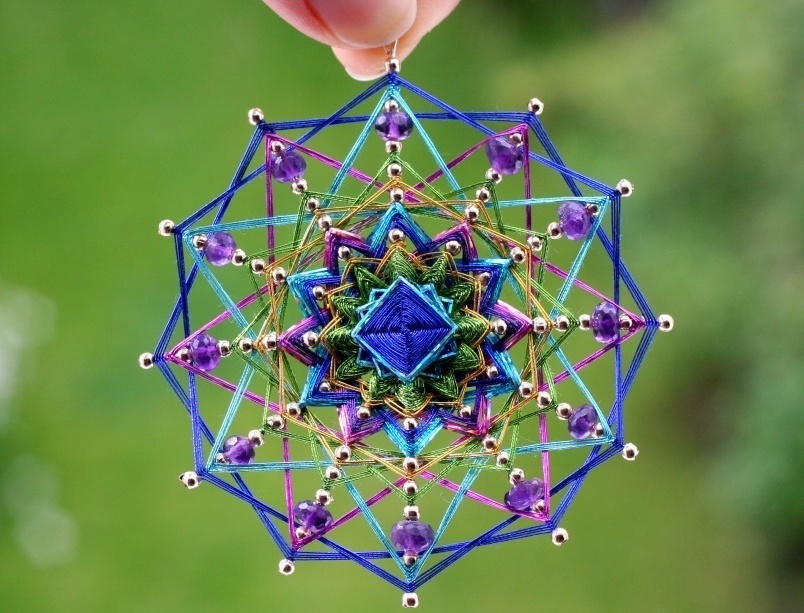
Important! In ancient times, mandalas were created over several weeks and even months by laying out various designs from sand. Today, the amulet can be drawn on paper, wood, stone, or woven from thread.
Which threads are best to make from?
Today, creating a talisman from threads with your own hands is considered one of the most interesting and accessible ways for ordinary people.In the process of weaving, the mandala will be “charged” with a person’s positive energy and “tuned in” to the desired wavelength.
Important! Representing a diagram consisting of a circle inscribed in a square, which is also enclosed in a circle, the amulet can have several meanings and variations. Each of the geometric shapes woven into the diagram differs from the others in color, which is associated with one of the wisdoms. For yourself, you need to choose the one that can bring the fulfillment of your desires as close as possible.
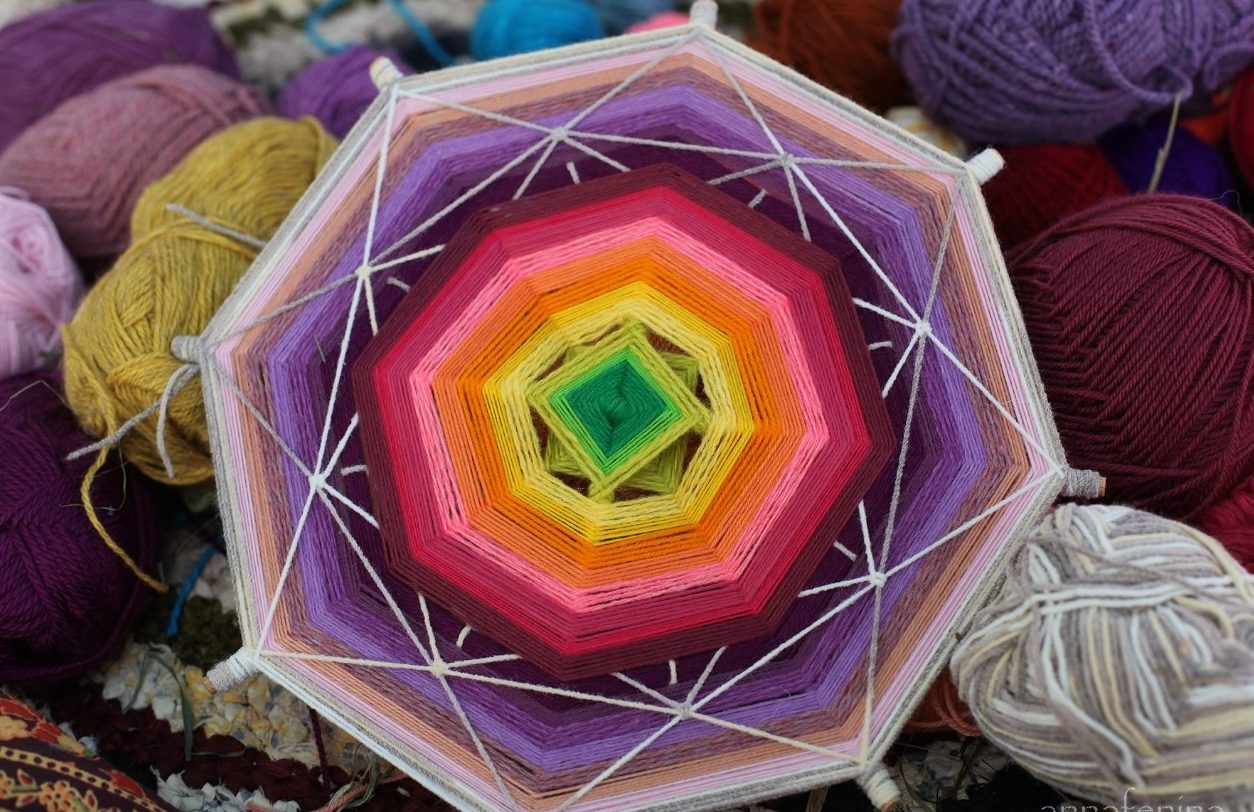
When starting to create a talisman, you need to think carefully about what colors it will contain:
- orange and yellow will help protect the physical body from diseases and magical influences;
- shades of blue and blue bring calm, protect from the evil eye and help a person concentrate;
- green brings monetary wealth and luck in work;
- red helps improve positions on the love front;
- purple and lilac promote the discovery of creative talents;
- white helps improve memory and organize thoughts.
After the color scheme has been chosen, you need to start selecting the threads from which the amulet will be created. Experienced needlewomen advise paying attention to the following nuances:
- A product made from natural wool looks best;
- for weaving small amulets, you should choose hard linen or cotton;
- Cotton thread with the addition of viscose will help add shine to the product;
- fleecy acrylic is best used for teaching;
- nylon threads stretch well, but they also sag over time; it is better not to use them.
What else will you need?
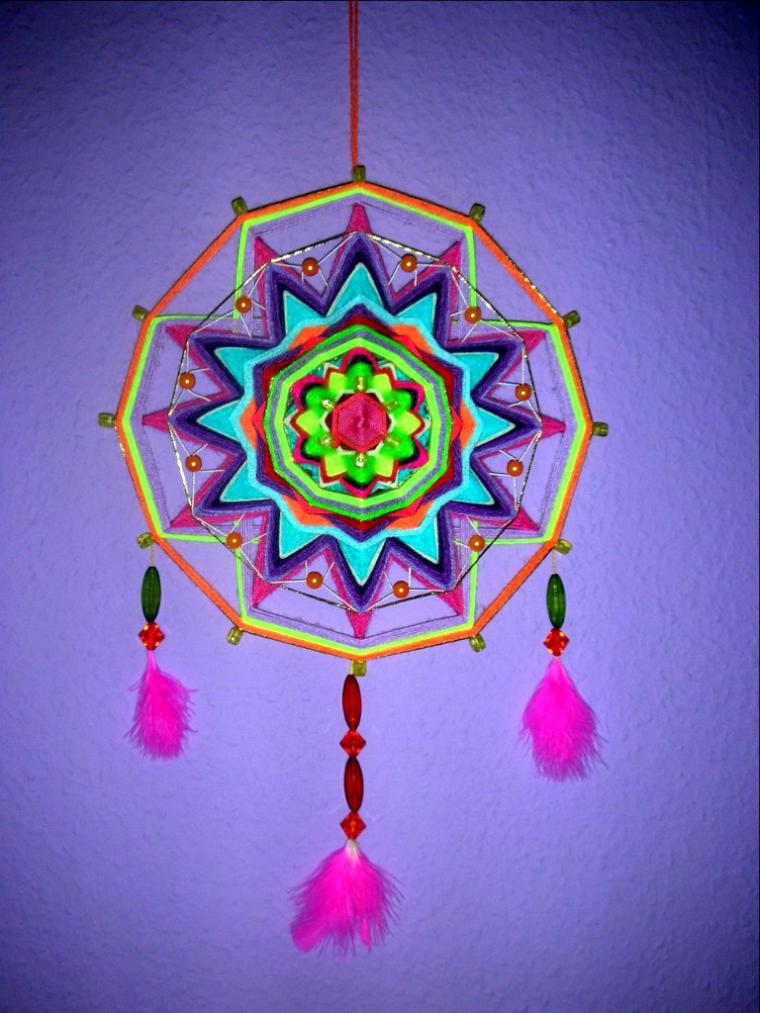
After you have chosen threads that are suitable in color and material, you need to start choosing sticks for the frame.In most cases, the frame consists of 2 or four pieces.
Important! To create small amulets, ordinary table toothpicks or pen refills are suitable. To weave large ones, use pencils, sushi sticks or wooden skewers. Branches cut from a tree are also suitable for this purpose. If they are not very even, you can correct the situation with the help of a rigid tourniquet, which is used to tighten them and leave them in this state overnight.
How to weave, what is the essence of weaving
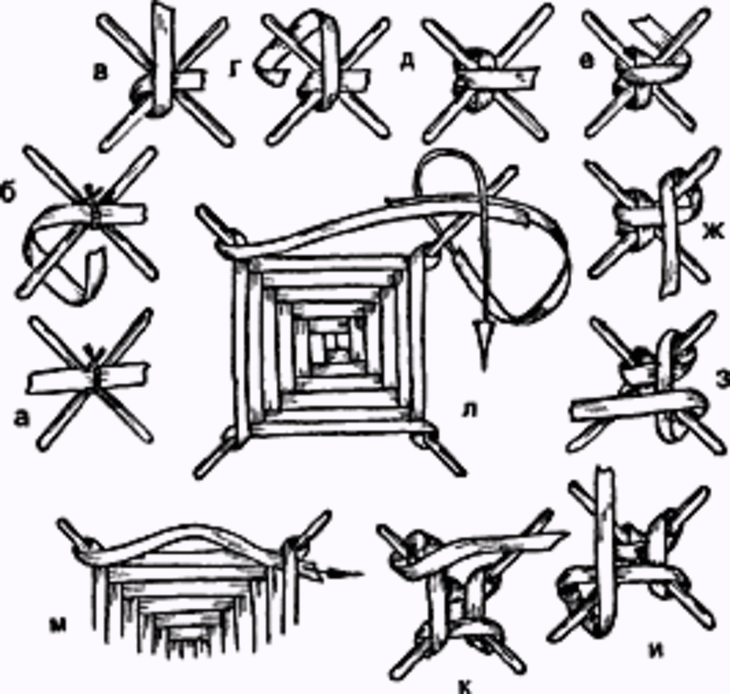
Beginners can try their hand at creating one of the simplest variations of the amulet. To work you will need:
- thin knitting needles – 4 pcs.;
- scissors;
- natural threads of several colors;
- additional elements for decoration.
Weaving process step by step:
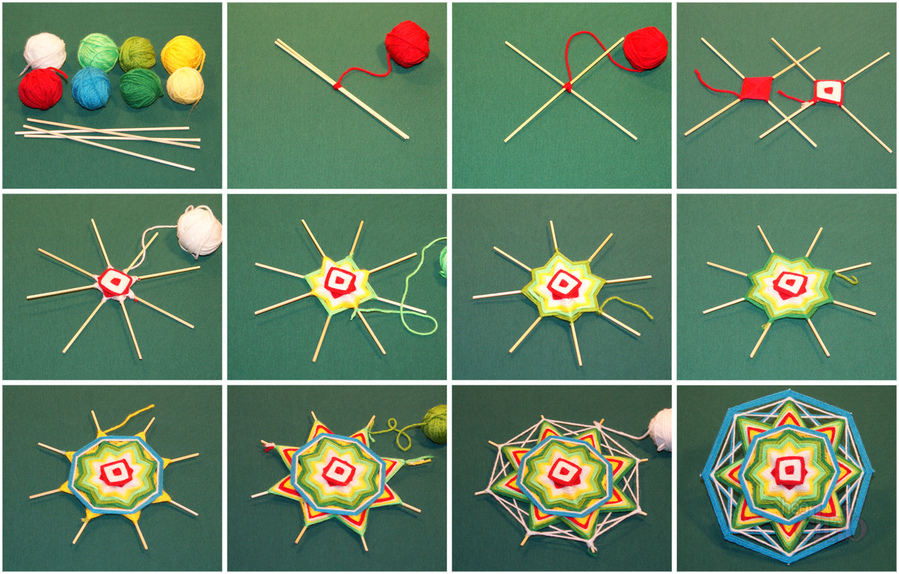
- A thread is tied to the middle of one knitting needle, pulling it into a strong corner. The remaining end of the thread is cut off.
- The second knitting needle is placed on top in a “cross” and tied with a thread of the same color.
- Next, the thread is wrapped around the joint of the knitting needles several times so as to form a small square.
- The same steps are repeated on the second pair of knitting needles.
- The two workpieces are connected to each other so that the fastening is completely motionless. Make several turns around each stick, moving clockwise.
Important! The spacing between the knitting needles should be the same. If you do not comply with this requirement, the mandala will turn out sloppy.
- To introduce the second color, one working thread is cut off, the second is extended onto it, not forgetting to cut off the extra knots.
- Further weaving is carried out using the “square” method, which involves making a turn on every second knitting needle. In this way, it is necessary to make the required number of turns, not forgetting to add threads of a different color to the product.
With prepared decorative elements, which can be large beads or small beads, you can decorate the finished mandala, giving it a special personality. You can attach the beads using a needle or silicate glue.
The essence of weaving a talisman is that the mood and messages with which it is created are subsequently returned to the person. To do this, you need to be as focused as possible in the process and not pay attention to external stimuli. Here are some useful tips:
- if during weaving the same thought constantly arises in your head, this may mean that the mandala itself is trying to draw attention to it;
- if during the work you no longer like the amulet, weaving should be stopped;
- if the workpiece breaks, this means that the resource of the amulet has been exhausted even before it was completed.
It is important to remember that while working, the mandala will conduct a dialogue with the person weaving it. Ignoring signals may result in the tasks assigned to it not being completed.
Mandala weaving patterns
There are many mandala patterns, using which you can create a suitable amulet. Beginners can pay attention to the following types:
- Celtic knot. Combining feminine and masculine energy, the amulet helps you achieve what you want.
- Mandala of love. To create it, threads of red and pink shades are used, as it is believed that these colors attract love and help revive passion in relationships.
- Money mandala. A talisman that attracts money is woven from green threads, while concentrating as much as possible on thoughts of material well-being.
- Multi-colored mandala of wishes.The essence of creating this look is to use several colors, each of which is responsible for the realization of a specific desire. While weaving, you need to be in a good and blissful mood.
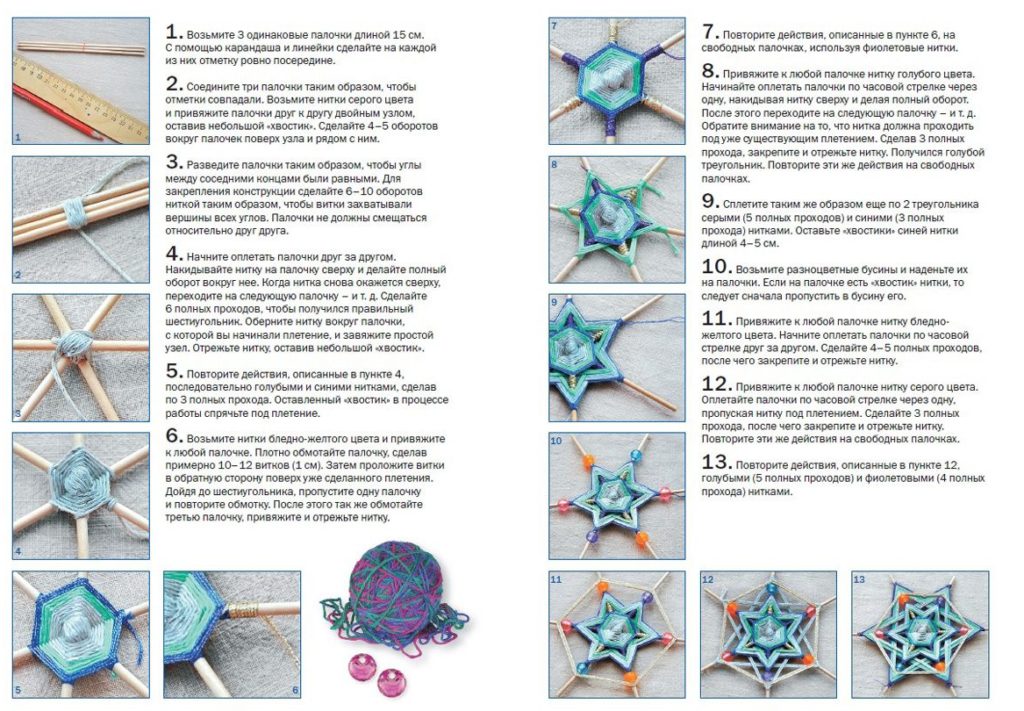
After the mandala is ready, it is hung on the wall or carried with you in a bag or pocket (if size allows). Every day until the moment the wish is fulfilled, the amulet conducts an internal dialogue, “reminding” it of what it must do for its owner.


 0
0